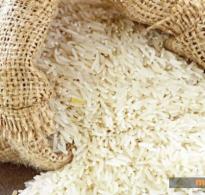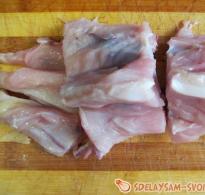How to choose and eat an avocado. How to buy a ripe avocado? About the benefits of avocado
Exotic fruit avocado attracts with its unusual taste and usefulness. When choosing it, it is very easy to make a mistake and buy not quite the fruit that you would like. When the avocado has got the right ripeness, you can get great pleasure from it.
In order not to waste money and not be disappointed, you should know the nuances that will help you make the right choice.
Health benefits of avocado and its uses
Avocados contain many vitamins and minerals. Together, they have a positive effect on the human body.
Avocado contains polyunsaturated fatty acids that help improve memory, increase its concentration, and reduce the risk of heart disease.
Thanks to potassium, which is part of the fruit, stress resistance increases and water-salt metabolism is normalized. Copper and iron save from anemia.
Avocados have the valuable ability to reduce arterial pressure. Therefore, the fruit is useful for those who are prone to hypertension.
The size of an avocado is from 5 to 10 centimeters. The mass of the fruit is in the region of 200 grams, although there are fruits up to a kilogram.
Avocados can take many forms:
- pear-shaped;
- oval;
- spherical.
Regardless of this, ripe fruits make excellent puree soups, smoothies and cocktails. The pulp of the fruit can be spread on bread and enjoy a pleasant creamy taste. Avocados are added to salads and used to make rolls.
Avocado Selection Secrets
When choosing an avocado, you need to consider it from all sides. There should be no damage, cracks or points on the peel. Spots indicate that the fruit is overripe, and possibly rotten inside.
Pay attention to the level of ripeness of the avocado. If the fruit is not fully ripe, then it has a hard pulp, and the taste is bitter and cloying.
Ripe fruit is sweet and tasty. Avocado flesh is oily and tender. It can be easily crushed with a fork. This is the fruit you need to buy.
Avocados are selected based on the following criteria:
- skin color;
- softness;
- cutting.
Depending on the degree of maturation, the fruit has different skin colors:
- light green. This color indicates that the avocado is not yet ripe. You can bring it to a ripe state on the windowsill. But it will take at least five days for the fruit to become soft and pliable.
- moderate green. If an avocado has this color, then it has two days left until it is fully ripe.
- Intense green. It is enough for the fruit to lie down for about a day to turn into a ripe fruit.
- Dark green with a brownish tint. The fruit can and should be eaten immediately after purchase.
By touching the fruit and lightly pressing the peel with your fingers, you can determine the degree of its maturity with almost 100 percent probability. If the avocado feels like it buckled slightly when pressed, and then the dent quickly smoothed out, then the fruit should be great. It is soft but not friable. The elasticity of the skin suggests that the fruit is not overripe.
cutting- another distinguishing feature that allows you to make a choice. In a soft avocado, it can be light yellow or dark brown. It is better to choose a fruit with a light stalk, since its dark color indicates that the avocado has already overripe and has lost some of its usefulness and taste.
Inside the fruit is a stone. If, when shaking the fruit, its knock is heard, then you can safely buy it - it is ripe and juicy.
When an avocado is bought for the future, it is more correct to choose a heavy and hard fruit.
What to do with an unripe avocado
The most delicious fruits of any fruit are ripe. This fully applies to avocados.
Hard and unripe fruits taste like an unripe pear or pumpkin, and you do not need to eat them right away. But when it was not possible to find ripe avocados, do not be upset.
At first glance, all the fruits seem the same, but take your time. If you take a closer look at the color of the skin, you will see that it is different. Avocado has several varieties. Depending on the season, one or another species appears on the shelves. Here are the main representatives:
- California variety. The most common variety that lies on store shelves all year round. Its main feature is a dark brown skin with pimples. The flesh is light green in color with a slight smell of freshness, slightly soft. Inside, under a layer of pulp, a light brown bone is hidden. The California variety is used for slicing into salads, for making rolls and various snacks;
- Florida variety. The fruits appear not earlier than autumn, since it is after the summer that their rapid ripening begins. The skin is glossy, mostly green. The pulp is lean, but big amount juice inside. The bone is round. white;
- Pinkerton. The main distinguishing feature of Pinkerton from other representatives is the presence of a small bone inside the pulp. The skin is pimply, and its color is dark green. Pinkerton is sold year-round, as maturation occurs regardless of the time of year.
Interesting!
100 g of avocado pulp contains 150 kcal.
Try to buy fruit in trusted places where there is a large selection. If there are several varieties, then think about the purpose for which you are purchasing the fruit. Thus, the Florida variety and Pinkerton are more suitable for consumption in fresh just. But the pulp of the Californian avocado can even be smeared on a loaf.
Criterias of choice
Before you rush to buy fruits, take a closer look at them. Turn the avocado in your hands, is there any damage on the skin? If yes, then take another fruit, evaluate it. The skin should not have deep scratches or cracks. If a specific pungent odor emanates from the fruit, the process of decay has most likely already begun. Evaluate the fetus according to several more criteria:
- skin color. It should be dark green or brown depending on the variety. Do not buy too light fruits, they are not yet ripe. The dark avocado is most likely already overripe, and you need to eat it in the near future;
- hardness. Try to lightly squeeze the fruit with your fingers and evaluate how you feel. If, after pressing, deep dents remain on the peel, then the pulp has already turned into “porridge”. When the fruit does not shrink at all, it is not yet ripe, the flesh is most likely still bitter in taste. The surest sign good avocado like this: after compression, fingerprints remained, but they quickly disappeared;
- stalk. The brown tail indicates that the fruit was plucked a long time ago, and it has already fully matured. The green stem says otherwise.
Even if you accidentally buy an unripe avocado, don't throw it away. The fruit will ripen normally at home. Wrap it in plain paper, leave it in a warm room for 2-3 days.
Attention!
To make the avocado ripen faster, place a ripe banana next to it.
How to clean

Peeling fruit is easy, even an inexperienced person can do it in a couple of minutes. Take a sharp knife and cutting board, and then proceed to clean up. For convenience, the process is divided into stages:
- wash the avocado, then blot with napkins;
- make deep cuts on the sides to divide the fruit into 2 halves. Gently turn the halves in different directions: this way you will see the bone;
- pry the bone with a knife, carefully remove it from the pulp;
- Remove the skin from the halves with a knife. It is quite easy to clean it, you do not need to take a knife, just pick up the tip of the peel with your fingers, pull it down, it will come off by itself;
- cut the fruit into slices or squares, as you prefer.
You can not get the pulp from the peel, for example, but eat it directly with a spoon. Remember that fruit after cutting should not be stored for a long time. Avocado in cut form is able to lie for a maximum of 2-3 days and only at a low temperature. Before storing half fruit, wrap the cut cling film and refrigerate. Avocados absorb strong foreign odors well, so storing smelly foods like onions and garlic nearby is not recommended.
As it is

It all depends on your taste, as well as the availability of free time. The easiest way is to sprinkle the pulp lemon juice, salt a little and eat with a spoon. Instead of lemon juice, you can take soy sauce. In Europe, toast is prepared with pulp for breakfast. Take slices of toasted bread and spread the pulp on them. Top the sandwich with a couple of slices of bacon or fish fillet. You can even fry an egg or add a baked one. chicken breast. Breakfast will be unusual and very satisfying.
Avocado served as a side dish meat dishes or to a bird. Bake beef steak With Italian herbs in foil, put the peeled fruit slices on the dish along with the meat and sprinkle with lemon. Garnish the dish with parsley sprigs. You can use fruit pulp for cooking various sauces. Make a salad dressing: mix the pulp from one avocado with spices and low-fat yogurt don't forget to salt. In addition to dressing, avocado is suitable for cooking mashed soups, it will add additional tenderness in taste.
Avocado is a favorite fruit of many, but it is not always easy to find it, and even more difficult to choose - they often lie on the shelves unripe and hard. And yet this is not a reason to deny yourself pleasure, but just a matter of time and patience. We learned from the owner of the Avocado Point cafe how to choose avocados, what varieties are there, which ones you should pay attention to and, of course, how an avocado should ripen properly.
How to choose?
Elina Osipova
owner of the Avocado Point bar chain
The fruit of an avocado is primarily a berry, and the ripeness of any berry is determined by how easily it can be picked from the bush. As long as we in Russia do not pick avocados from trees and bring all the fruits in a semi-finished state, there are a couple simple ways determine the ripeness of an avocado: Softness gives us the first message of ripeness, but we should not rely on this alone, as even moderately soft can be underripe, overripe and, worse, rotten inside.
When buying, it is important to look at the cutting, it should separate easily enough, but at the same time not fall off on its own - this is the first sign that the avocado is rotten. The color of the fruit under the handle is also important, it should be a sure light yellow, a little greenish, the main thing is not dark, otherwise it will be dark inside.
What varieties are there?
Avocado is the star among fruits, there are hundreds of varieties different forms, sizes, colors, flavors and textures. The most popular and present on the shelves:
"Hass"- black skin round form and small stone size, delicate oily texture, pulp yellow color and slightly nutty flavor, perfect for guacamole. "Hass" is also pleasant because it is easy to transport and it ripens perfectly, rarely spoils and turns black. The most reliable variety. Season - all year round, brought from Kenya, Israel, South Africa, Mexico.
"Fuerte"- green peel, elongated shape, the stone is usually small. This variety has a more grassy taste, is more unstable in ripening, the flesh is white-yellow. Season - summer and autumn.
"Ettinger"- thin green peel, drop-shaped, but a very large stone, this is a significant disadvantage of this variety, because the weight of the fruit is quite large - 200–250 grams, there is little pulp in it, and the stone inside quickly begins to grow white bloom, because of which the fruit itself loses its taste and turns into a potato. Season from September to January.
"Pinkerton"- pimply skin, small bone, yellower at the stone and lighter at the edges, pear-shaped. The skin is easily detached, as in the Hass, and the weight is usually greater. Season - autumn - spring.
There are more exotic varieties, which can be found in markets like Usachevsky and Danilovsky:
Semil 34- very tasty, oval shape, often looks like a ball, the weight of one fruit is up to a kilogram, and the pure pulp is about 65–70%. It is very important that, despite the fact that the variety is from the hot Dominican Republic, it is frost-resistant, that is, it can be stored for a long time and nothing will come of it. It has several stages of maturation and this changes the taste. Ready "semil" has a fresh fruity taste, juicy, and you can even eat it just like that, not very good for guacamole, as it will be watery. However, let it be slightly overripe, and it will be one to one like “hass”, that is, it will become oily, a nutty taste will appear, the flesh will turn bright yellow.

"Royal Black Avocado" from Burma and Vietnam. This variety is very similar to the giant "hass": black dense skin and extraordinary flesh. The shape of an ideal ball and a small stone, this variety produces the most delicious and beautiful guacamole, as the flesh has a canary-yellow color. This variety can occasionally be found on the shelves in specialized exotic fruit stores. The season is very short - December - March.
What to do with the unripe?
Finding a ripe avocado on the shelves is not always easy - the reality is that most often we buy a hard avocado and wait for it to ripen. Question: how to do it faster? There are a lot of videos on the Internet on how to quickly ripen avocados: someone bakes in foil, someone puts them together with bananas. My method does not guarantee two hours of ripening, but it will definitely not ruin the taste and texture, which, in my opinion, is the most important thing.
Exotic fruits and vegetables have firmly established themselves on the shelves of our stores. One of the most popular "exotics" - the fruit is extremely useful and very versatile. It is appropriate both in the daily diet and on the festive table.
The main thing is to know how to choose it, how to cut it and how to use it without harm to health. It's not difficult, but there are subtleties.
Avocado is a fruit! Or a vegetable?
The homeland of Perseus American, this important fruit crop has such a scientific name, are considered Mexico and Central America. Behind delicate taste and the specific texture of the Aztecs called the avocado "aucatl", which according to one version translates as "forest oil", according to another - "testicle" (the fruit has a positive effect on male power). The fruit has another name - "alligator pear". He got it thanks to his pear-like shape.
Today it is grown in all subtropical regions of the planet. More than 400 varieties of this evergreen are known, and the sizes of pear-shaped, ellipsoid or spherical fruits vary from 200 grams to 1.5 kilograms! We most often come across the Fuerte variety, whose not very large fruits are pear-shaped and have a smooth, shiny skin.
It is still difficult to say whether an avocado is a fruit, vegetable or berry? If you consider that the fruits grow on a tree, then this is definitely a fruit. By chemical composition and, especially the taste, it is closer to a vegetable. In scientific sources, it is often referred to as a single-seeded berry ...
However, the vast majority calls it a fruit - and we will not go against public opinion. Fruit means fruit!
How to choose?
The first thing you need to pay attention to is the color and density of the fruit. You can also focus on aroma and sound.
Color
The color of the peel of a mid-ripening fruit is from bright green to dark green. There are varieties with brown skin. A ripe avocado is almost black in color. The peel should be free of spots, cuts and cracks. As for the already mentioned Fuerte variety, it is better to choose a dark green or black-brown fruit.

Density
Unripe - hard and heavy. The riper it is, the softer, but the quality ripe fruit should be elastic, not loose. unripe avocado makes sense to buy if you are not going to eat it right away. At room temperature"Alligator pear" will reach the desired condition in 5-7 days. It can be wrapped in paper and put in a dark place. A banana wrapped with avocado will speed up the ripening process.
The pulp of the fruit of medium ripeness is white-green or creamy. Diced it is used in salads, sliced - as a separate delicacy. You can also just take it out with a teaspoon and eat it straight from the peel.

In a very ripe avocado, the flesh has a rich yellow-green color and an oily texture. It is used for cooking salad dressings, sauces, spreads for sandwiches, as a filling for snacks. And also as a cosmetic product.
Smell
A fresh avocado should not have an overly strong smell. A rich aroma is a sign of an overripe fruit, which indicates the spoilage of the product.
Sound
Take and shake. If you hear that the bone inside is shaking, you should not buy fruit: most likely, it is already spoiled. The bone should dangle quite a bit.

infoniac
Place of attachment of the cutting
In a ripe avocado, the stalk is separated easily. If the attachment point is yellowish-green, the avocado is at the right ripeness. If brown or dark brown, then the fruit is overripe or even rotten. But this sign is relevant only for a freshly torn cutting.
Taste
Unripe tastes very hard and bitter. The mid-ripening fruit has a neutral taste with a subtle nutty aftertaste. Experts say that perfect option- if the pulp is like butter with a slightly sweet aftertaste.
How to cut?
Cutting an avocado is quite simple:
- Peel off the skin.
2. Cut the fruit lengthwise ( classic version) or across.
3. Break it in half. ripe fruit well separated by hand.
4. Remove the bone by prying it with a knife or picking it with a spoon;
5. Remove the pulp.
The peel can be peeled in several ways: cut with a knife, clean with your hands (if the ripeness and variety of avocados allow it), leave it if we eat the pulp with a spoon.
- There is a large bone inside, so stop trying to cut through it with a knife, like an apple, for example. The stone is toxic, it must be thrown away, and the shell from it, which may remain in the core of the fetus, must be cleaned and discarded as well.
- In the open air, the flesh quickly oxidizes and darkens. Therefore, sprinkle the cut and chopped avocado with lemon juice. eat it healthy treat you need it as soon as possible - avocados are not stored for a long time.
Knowing how to choose an avocado, you can not worry that the acquired fruit will be tasteless or overripe. This exotic fruit gained popularity not so long ago, but has already managed to fall in love with many.
The fruit has a spherical or slightly elongated shape (can be from 7 to 20 cm long). Many do not even know that it is a fruit or vegetable. The fact is that, according to all the laws of biology, this is a fruit, since it grows on a tree, and inside there is a bone. But in their own taste properties it is more like a vegetable: it has little sugar, it resembles pine nuts And butter thanks to its oily texture. But still, avocado is considered a fruit, although it is often used for cooking. variety of salads with sour and salty sauces.
Delicious avocado has a composition rich in vitamins and various elements, it is also often called a natural antioxidant.
Calorie content varies from 200 to 220 kcal. It depends on the fat content of the fruit, its variety and the geography of cultivation.
The main features of ripe fruit
There are several ways to choose a ripe avocado:
- dark green skin color;
- soft but elastic texture;
- exfoliation of the bone.
Ripe fruits must be eaten immediately, as they spoil very quickly. If they need to be kept for a few more days, it is better to wrap the product in paper and send it to the vegetable compartment in the refrigerator.
Fruits cut in half are stored for no more than 2 days. The place of the cut often darkens, so it is advisable to treat it with lemon juice and wrap it in a film.
If the fruits are about to start to deteriorate, and there is no way to eat them now, you can grind them into a puree and freeze. This will help to preserve the beneficial properties to the maximum.
Criteria for choosing a mature fetus
Sometimes choose mature fruit not easy, since the upper layers have already acquired softness and juiciness, while the inner ones still retain astringency and hardness. On plantations, the crop is always harvested slightly underripe, so that it will normally endure transportation. Therefore, finding the perfect fruit right on the counter is quite difficult.
Color and softness
Ripe specimens are covered with a thin peel of dark green (closer to brown) color. Such fruits can be consumed immediately after purchase. A light shade of green indicates that the fruit is not yet ripe. Moderate green - proof that the fruit can be eaten in about 3 days. The rich green of the peel is direct evidence of almost fully prepared to use.
The Californian avocado has a black skin. This is natural for the fruits of this variety. They are very soft and do not hold their shape at all. Therefore, they are most often used for cooking different snacks like pâtés, sauces and purees. The pulp of this fruit can simply be spread on slices of bread instead of butter.
However, you should not focus solely on the shade: the main thing is elasticity. The fruit must be taken in hand and try to squeeze it with your fingers. This must be done very carefully, otherwise you can suffer from the dissatisfaction of sellers if an overripe avocado bursts right in your hands. If the pulp is elastic and hard, then the fruit has not yet reached the required degree of ripeness. The easily pressed pulp, which remains even after the fingers are removed, indicates that the fruit has already overripe. Such fruits should not be taken, as they may be rotten inside.
By cutting
In a well-ripened fruit, the pulp exfoliates from the stone, so you can also focus on this. It is necessary to bring the fruit to the ear and gently shake it. If tapping is heard, then such a fruit can be bought. If there are no sounds, the fruit is not yet ripe, so the pulp is still firmly attached to the bone.






